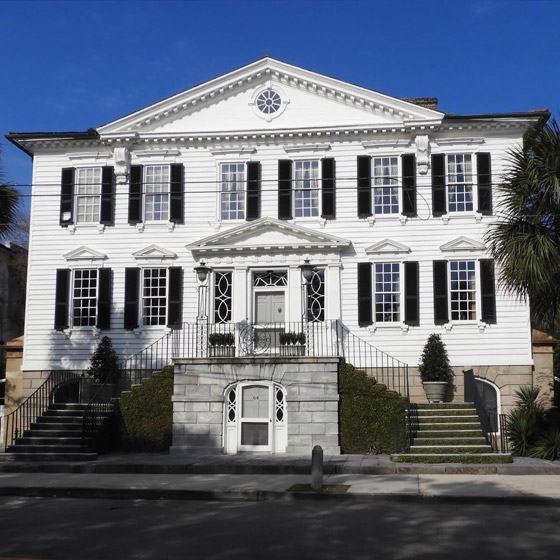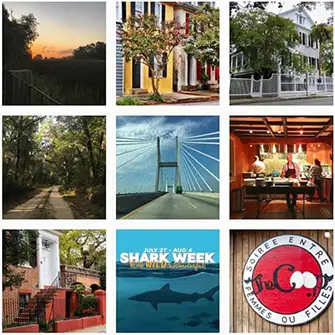
64 South Battery - Gibbes House
64 South Battery was built in 1772 by a wealthy shipping magnate, William Gibbes. A wonderful example of a Charleston double house (two rooms wide and two rooms deep) in the Georgian architectural style, 64 South Battery had a pristine view of the Ashley River. Today that view is gone, and it is difficult to imagine the original view with the landfill and houses that now stand in front of 64 South Battery.
Mr. William Gibbes was a patriot who, along with other South Carolina patriots, was imprisoned at St. Augustine, Florida in 1780 after the British occupied Charleston during the American Revolution. Being a large and roomy house, 64 South Battery was confiscated by the British. It was used as a hospital until the Americans won the war and the British left the city in 1782. Gibbes and his family returned to the house at the end of the war and lived there until he died in 1789.
The house was sold in 1794 to Sarah Smith, who remodeled portions of the interior in the new Federal Style. Sarah's daughter Mary Smith married Judge John Grimke, making Sarah the grandmother of the famous abolitionist sisters Sarah and Angelina Grimke, who are the subject of various biographies and the well-known historical novel The Invention of Wings. Sarah Grimke was probably named for her grandmother Sarah Smith.
In 1928, 64 South Battery was purchased by Mrs. Cornelia Roebling, the widow of the designer of the Brooklyn Bridge. While she made some changes to the house itself, I believe her most important contribution to the property concerns the garden. 64 South Battery is a large property, and there was the footprint of an earlier garden in addition to several dependency buildings, which still exist.
Mrs. Roebling commissioned a young landscape architect she knew from the New York area to come to Charleston and design her garden area behind 64 South Battery. His name was Loutrel Briggs, and 64 South Battery was the beginning of a love affair between Briggs and Charleston that continues today, forty years after his death. From that first commission, Briggs went on to design over 100 gardens in Charleston, with one of the most famous being the garden at 58 Church Street, the subject of a New York Times bestseller known as Mrs. Whaley and Her Charleston Garden.
It is amazing how many Charleston structures qualify in my mind as a mansion or grand house. We still have several to explore in the next few posts.



